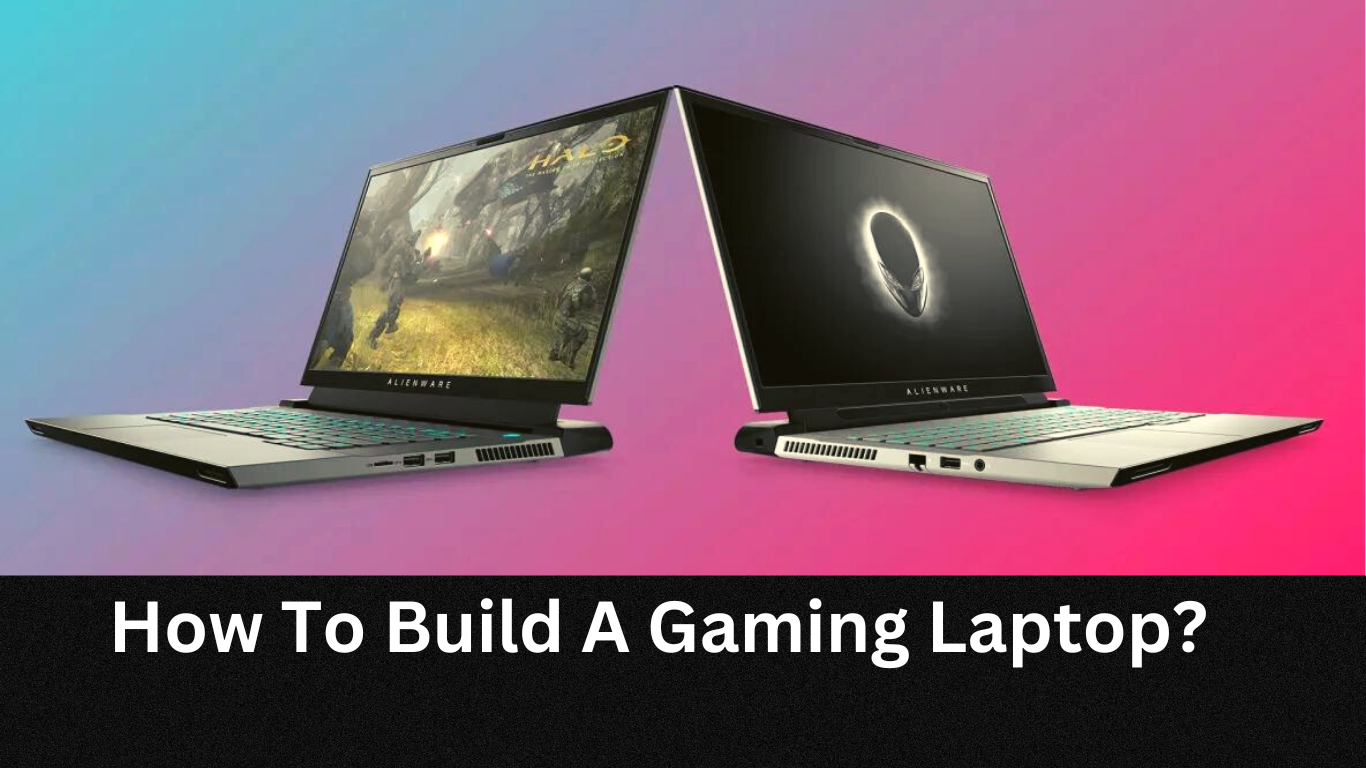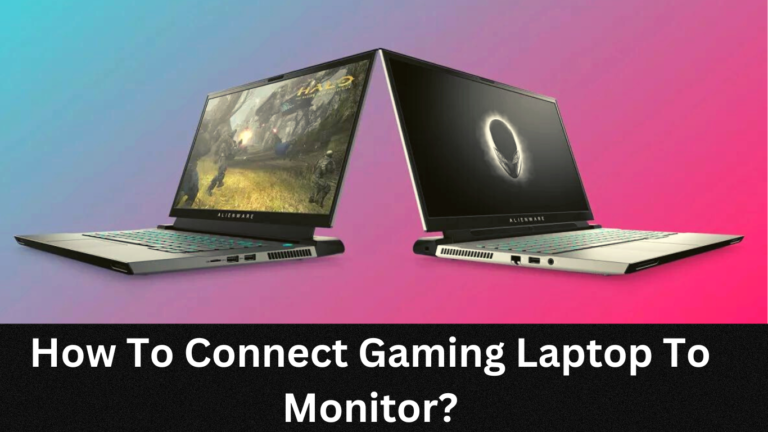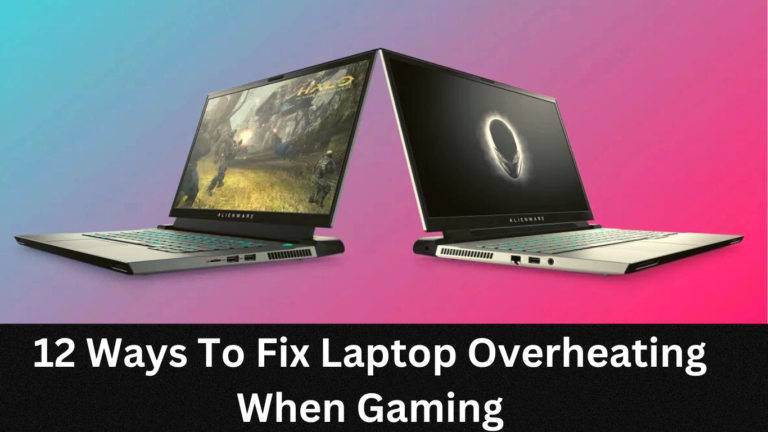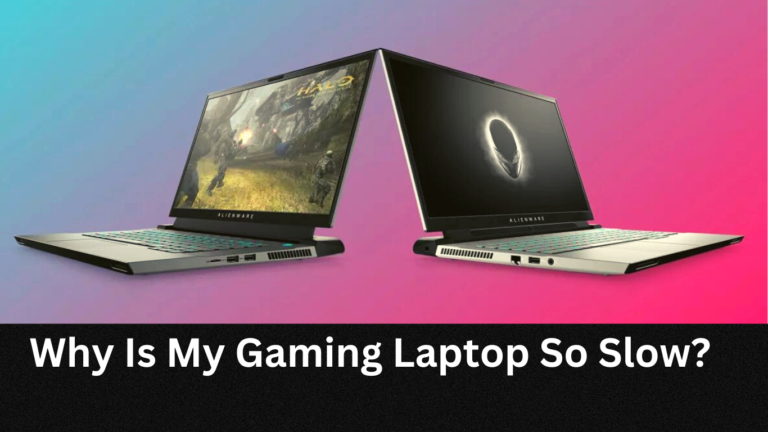How To Build A Gaming Laptop?

Are you ready to fulfill your dream of building a gaming laptop? Building a gaming laptop can be an exciting and rewarding experience.
It requires a lot of research and planning to ensure you get the best laptop that meets your needs and budget.
With the right components, you can create a powerful machine capable of running any of today’s popular games with ease. But before you start buying parts, there are a few things you need to consider.
From budget to features, here is a guide on how to build a gaming laptop from the ground up.
How To Build A Gaming Laptop? (Short Answer)
Building a gaming laptop requires selecting components such as a processor, graphics card, RAM, storage drive and operating system. Once all the parts have been selected and acquired, you can begin assembling them in the laptop case. Make sure to properly install each component according to the manufacturer’s instructions and make sure it is correctly seated in place. After assembly is complete, install the operating system and drivers for each component. Finally, run any necessary updates or patches to ensure your system is running at its best!
Video Guide: How do you make a gaming laptop?
Planning And Research:
It is essential to know what you need from your laptop before starting the build.
Building a gaming laptops can be a daunting task.
It’s important to know what kind of performance you want, what budget you have to work with, and the type of components that will support your desired gaming experience.
Choosing Parts for Your Laptop
The first step in building a gaming laptop is to choose the right parts.
You’ll want to consider your budget as well as what kind of games you plan on playing and how powerful you want your laptop to be.
Some things to keep in mind when selecting parts are:
1. CPU (Central Processing Unit):
This is the “brain” of your computer, so it should have plenty of processing power and advanced features.
Look for something like an Intel Core i7 processor or better if you plan on playing AAA titles or doing other intensive tasks.
2. GPU (Graphics Processing Unit):
This is responsible for rendering graphics and handling 3D tasks. Choose one that has plenty of dedicated video memory and supports modern technologies like ray tracing.
Nvidia GeForce RTX GPUs are popular choices among gamers these days.
3. RAM (Random Access Memory):
The more RAM your laptop has, the more applications it can handle at once.
8GB should be enough for most games but 16GB may be necessary if you’re planning on running multiple programs simultaneously or editing large video files regularly.
4. Storage:
You’ll need space for all those games! If money isn’t an issue then go with an SSD for faster load times; otherwise opt for a standard hard drive with ample storage capacity.
Once you’ve chosen all your components, it’s time to start assembling them into a complete machine!
Assembling Your Laptop
To assemble your new gaming laptop yourself, make sure you have all the necessary tools (such as screwdrivers) and follow these steps closely:
- Place the motherboard inside the laptop case and secure it using screws or standoffs depending on the model
- Install each component into its designated socket on the motherboard according to the diagram included in its manual
- Connect any additional cables such as power cables or SATA data cables
- Attach any external hardware such as USB ports or audio jacks
- Insert a battery into its slot
- Close up the case with all its screws
- Apply thermal paste onto any exposed metal surface between components
- Boot up your new machine! If everything went well then congratulations—you’ve just assembled a powerful new gaming laptop!
Gaming Laptop Build: Operating System and Driver Installation
The next step in building a gaming laptop is to install the operating system and drivers. This can be time-consuming so it’s important to make sure you have all the necessary components before beginning.
Installing an Operating System
The two most popular choices for gaming laptops are Windows 10 and Linux. Both offer plenty of features, but Windows has better game support and compatibility with most hardware. To install it on your laptop, follow these steps:
- Insert your Windows installation media into your laptop’s optical drive or USB port
- Reboot your computer
- Follow the instructions on the screen for setting up Windows 10
- Once complete, run all relevant updates and patches
- Go through the setup process to customize settings like language and time zone
- Finally, restart one last time to finish the installation process
Installing Drivers
Once you have an operating system installed on your laptop, you’ll need to install any device drivers such as graphics drivers, sound drivers, etc., that may be needed for specific games or graphical applications.
- Firstly, download all relevant device driver files from their manufacturer’s website
- Secondly, open each file with administrator permissions
- Thirdly, choose ‘Install’ or ‘Setup’ when prompted by the installer program
- Fourthly, follow any additional onscreen prompts to complete installation of each driver
That’s it! After implementing these steps correctly you should now have a fully functional gaming laptop ready for use!
Tips for Maintaining and Upgrading a High-Performance Gaming Laptop
High-performance gaming laptops require special attention when it comes to maintenance and upgrades. Follow these simple tips to make sure your laptop is running at its best:
- Keep your machine clean: Dust can affect the performance of your laptop, so ensure that you regularly clean the exterior with a cloth dampened with mild soap and water, then use compressed air to remove any dust from vents and other openings.
- Monitor system performance: Use a tool like Task Manager or System Monitor to track resources usage (CPU, RAM, etc.) This will help you identify any bottlenecks caused by background applications or hardware components that may need replacing.
- Update drivers regularly: Drivers can become outdated over time which can cause issues with game performance. Install any new updates when they become available to keep things running smoothly.
- Invest in cooling solutions: High-performance gaming laptops generate a lot of heat which can damage your hardware if not properly cooled. Invest in cooling pads or even external fans if temperatures start getting too high.
- Upgrade components as needed: If you find yourself needing more power for certain games or tasks than what’s currently available, consider upgrading certain components such as the GPU, RAM, or storage drive to get better performance.
Conclusion:
Building your own gaming laptop is a great way to get the perfect machine for your needs. With some basic knowledge and preparation, you can create a powerful machine that runs games smoothly and efficiently.
Remember to keep your laptop clean, monitor system performance, update drivers regularly and invest in cooling solutions to ensure it remains in top condition.
With a bit of maintenance and the right upgrades, you’ll be able to enjoy games on your gaming laptop for many years to come. Good Luck & Happy gaming!
FAQS:
Is it OK to build your own Laptop?
Yes, it is absolutely possible to build a laptop from scratch. However, building a laptop requires more advanced knowledge and skills compared to building an ordinary desktop PC. It’s not recommended for anyone who has no prior experience in laptop assembly. If you’re unsure of what steps to take, it’s best to consult with a professional or seek help online. However, if you’re up for the challenge, building your own laptop can be a rewarding experience and can save you money in the long run. With the right parts and a bit of knowledge, you can create your own powerful gaming laptop that will last for many years to come.
What type of GPU should I get for my gaming laptop?
The type of graphics card you need depends on the types of games or tasks you intend to perform. If you are just playing casual games, you may be able to get by with an integrated GPU (like Intel HD Graphics or AMD Radeon RX Vega). For more intensive tasks like 3D gaming or video editing, you’ll want a dedicated GPU such as an NVIDIA GeForce GTX 1060 or AMD Radeon RX 580.
What type of processor should I get for my gaming laptop?
The type of processor you should get depends on your budget and the types of games or tasks you plan to perform. For basic gaming, an Intel Core i5 or AMD Ryzen 5 processor should be sufficient. For more demanding tasks like 3D gaming or video editing, you’ll want to look for an Intel Core i7 or AMD Ryzen 7 processor.
How much memory and storage do you require for gaming laptop?
Generally, for gaming laptops, you’ll want to look for laptops that have at least 8 GB of RAM and 256GB SSD storage. If you plan to use your laptop for more intensive tasks, like photo or video editing, a laptop with 16GB RAM and 512GB SSD storage is recommended.





